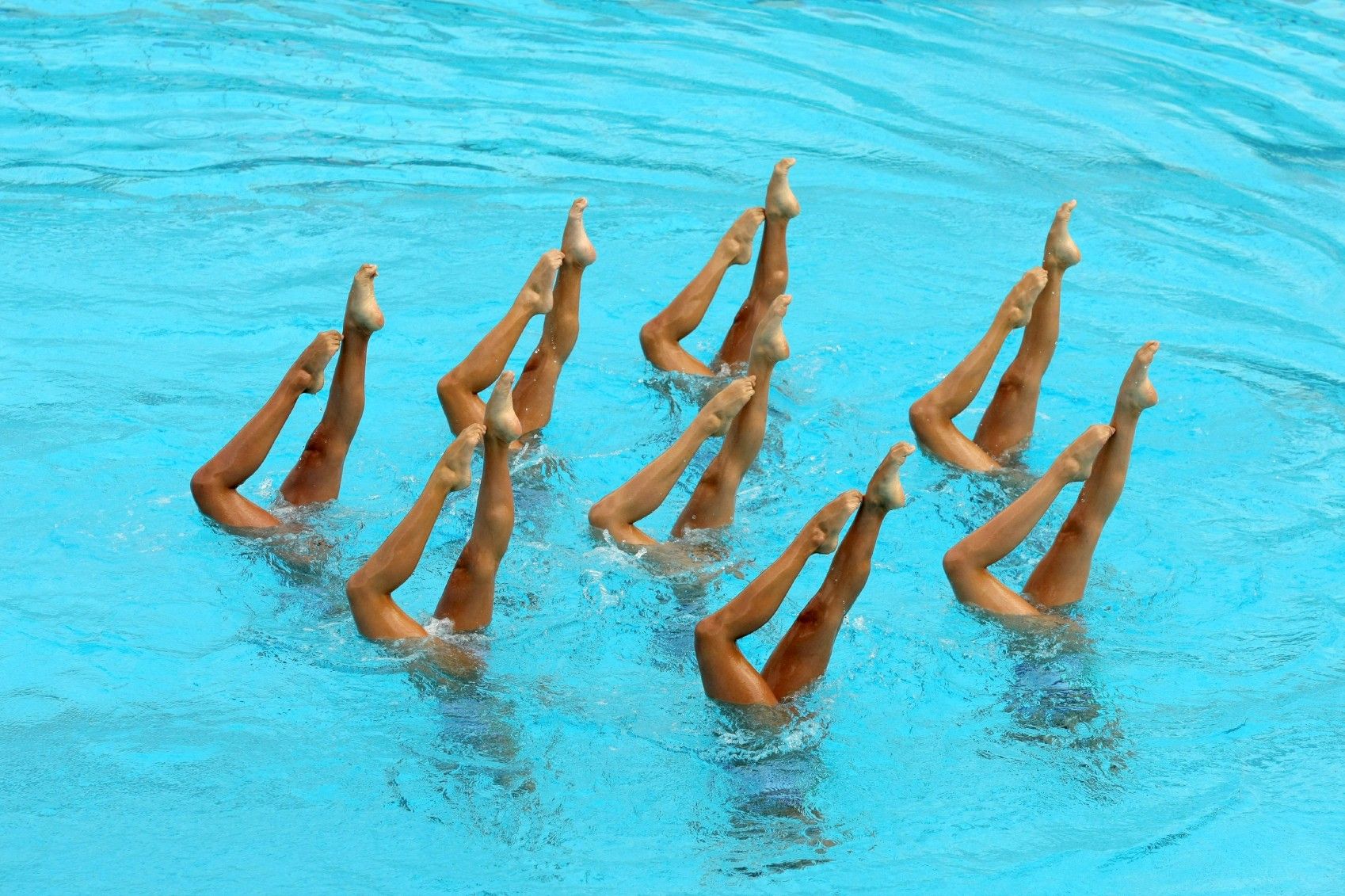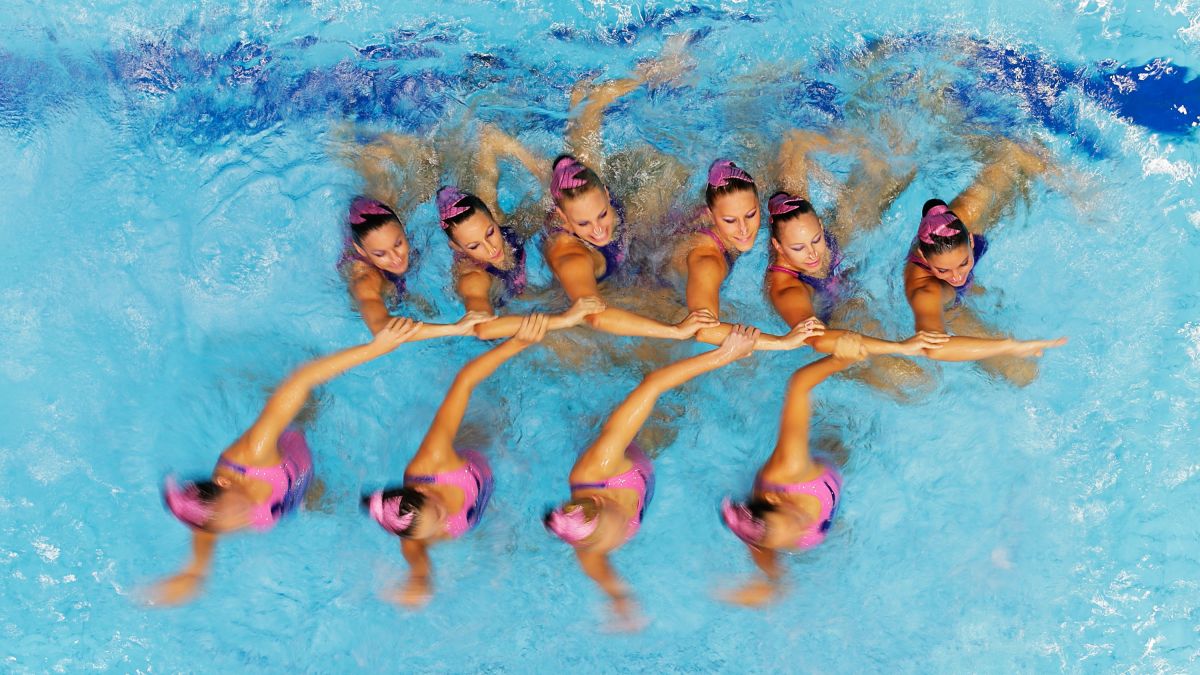Synchronized swimming, artistic swimming, or underwater ballet – call it by whichever name you wish but do not call this sport easy! Not only is synchronized swimming a graceful art form, but it is also a very demanding water sport that requires strength and flexibility.
You may have watched synchronized swimming contests during the Olympics, but the artistic sport is not limited to just that. Synchronized swimmers train for weeks to perform difficult routines but manage to make the final performance look incredibly effortless.
In this article, you will get an overview of what synchronized swimming is. You will also learn the history behind this popular Olympic sport and also get a glimpse of how one can train to be a synchronized swimmer.

What Is Synchronized Swimming?
Synchronized swimming is an amalgamation of swimming, gymnastics, and dancing. Swimmers perform various synchronized yet elaborate moves. The performances are choreographed to match the music and most often have a theme.
There are solo, duet, or team exhibitions. Not just that, the performances can be classified as a free team, free combination, or highlight. Governed internationally by FINA, the sport requires very advanced water skills.
The swimmers compete in international competitions to flaunt their endurance, strength, and precise timing. Synchronized swimming routines may range from two to four minutes. The shortest performances are the technical solos.
You would be surprised that kids as young as seven years of age may enroll in synchronized swimming classes guided by professional coaches.
Origin of Synchronized Swimming
Now that you understand what synchronized swimming is, it is time to dig deeper and find out about its history. So, when, where, and how was synchronized swimming invented? Let’s find out!
Even though the first recorded synchronized swimming competition was held in 1891 in Berlin, Germany, the sport was called water ballet back then. While only men explored the sport at the time, it was soon realized that women were better fitted for it.

Synchronized swimming was invented by Katherine Whitney Curtis. In 1923, she organized the University of Chicago’s water ballet club. The club consisted of 60 swimmers who were collectively called The Modern Mermaids.
The Modern Mermaids participated at the Chicago World Fair in 1934, entertaining thousands of spectators with their synchronized strokes in perfect harmony with each other. This was when the term ‘synchronized swimming’ first gained popularity.
Introduction to the Olympics
Throughout the 20th century, the sport became increasingly technical and athletic. leading it to be introduced as a demonstration sport in the Olympics from 1952 to 1968.
In 1955, the first official international synchronized swimming competition took place in Pan-American Games, Mexico. It was then featured in the 1973 FINA World Championship and 1984 Olympic Games in Los Angeles.
Synchronized Swimming Requirements
To spectators, synchronized swimming may look really easy even though in reality it is far from easy. The performers are trained to never show whether they are tired, need air, or if their muscles are burning.
Surely, looking flawless yet effortless takes a substantial amount of training and practice. Furthermore, synchronized swimmers have to match every position. Did you know a team routine has hundreds of movements? Yes!
On top of that, synchronized swimmers are expected to match not one or two but eight other participants for team performances. The precision has to be perfect right down to how straight their knees are or the posture of their pinky fingers.
How to Train
Understandably, they train extensive hours to achieve this synchrony. The swimmers work out eight hours a day for six days a week. This includes pool training and also cross-training on land.
In addition to synchronization, they need to perfect other aspects such as flexibility, power, and technique. From strength conditioning to ballet to pilates – synchronized swimmers do it all!

The Bottom Line
Today a popular Olympics sport, it has taken synchronized swimmers a lot longer to be recognized and respected than their speed swimming counterparts. However, the sport is every bit as challenging.
There may be a lot of debate regarding when and where the sport first originated but one thing is clear – synchronized swimmers work quite hard to bring the poetic sport to life.







